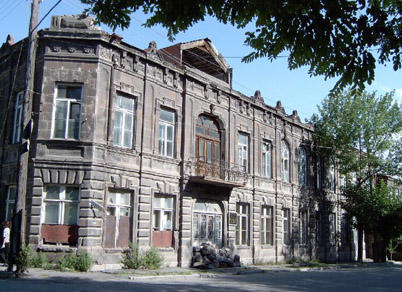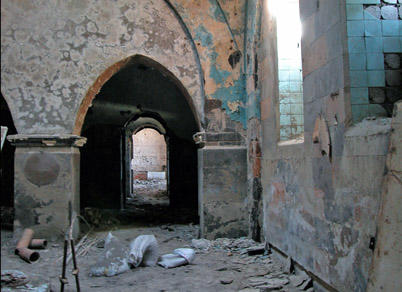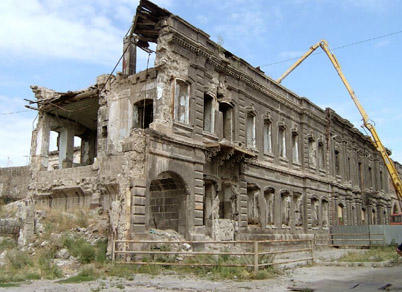Kumayri District, Alexandrapol
2008 World Monuments Watch
Located in the center of the city of Gyumri—formerly Alexandrapol—in northwest Armenia, the Kumayri District lies at the heart of a city that was first settled in the fifth century B.C. Although some remains of the ancient city are preserved, the majority of its historic buildings date to the nineteenth and twentieth centuries, and reflect the evolution of its urban fabric from its Alexandrapol stage (1837-1924), through the period from 1924 to 1990, when it was a part of the Soviet Union and its name was changed to Leninakan. The Kumayri District—which covers 1,000 hectares and contains some 1,600 buildings and monuments—ranges from Neoclassical buildings, which emerged as part of nineteenth-century ideas about urban development, to high-rise modernist structures from the Leninakan era, which were designed as part of a program focused on creating immense boulevards and town squares. Monuments range from the forbidding Sev Ghul fortress—a remnant of the Russo-Turkish War—to opulent late-nineteenth-century buildings like the Paris Hotel, used as a maternity hospital during the Soviet period. While the major 1988 earthquake in Armenia destroyed some 80 percent of the buildings in Gyumri, damage has been further compounded by political instability and economic difficulties in the region following Armenia's independence in 1990. Unemployment, political corruption, and limited financial resources have led to the abandonment and misuse of historic buildings and eroded zoning codes. With the exception of churches, the buildings in the historic district are privately owned, and are being sold, remodeled, and destroyed with little consideration for historic preservation. As Gyumri emerges as an economic center in Armenia, the pressures of development, a lack of legal statutes protecting cultural heritage, and the dearth of trained conservation professionals in the area together pose a threat to the historic fabric of the city.



